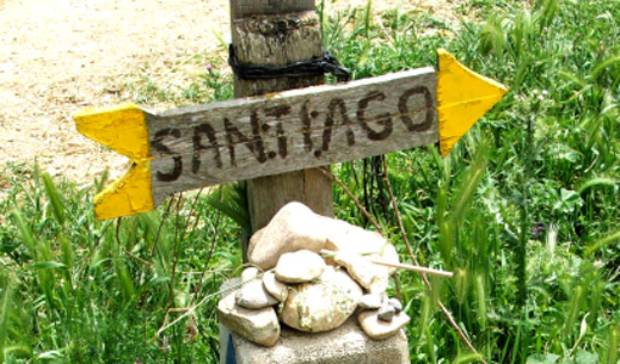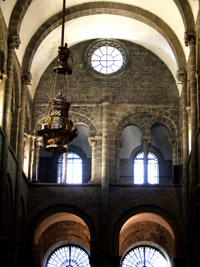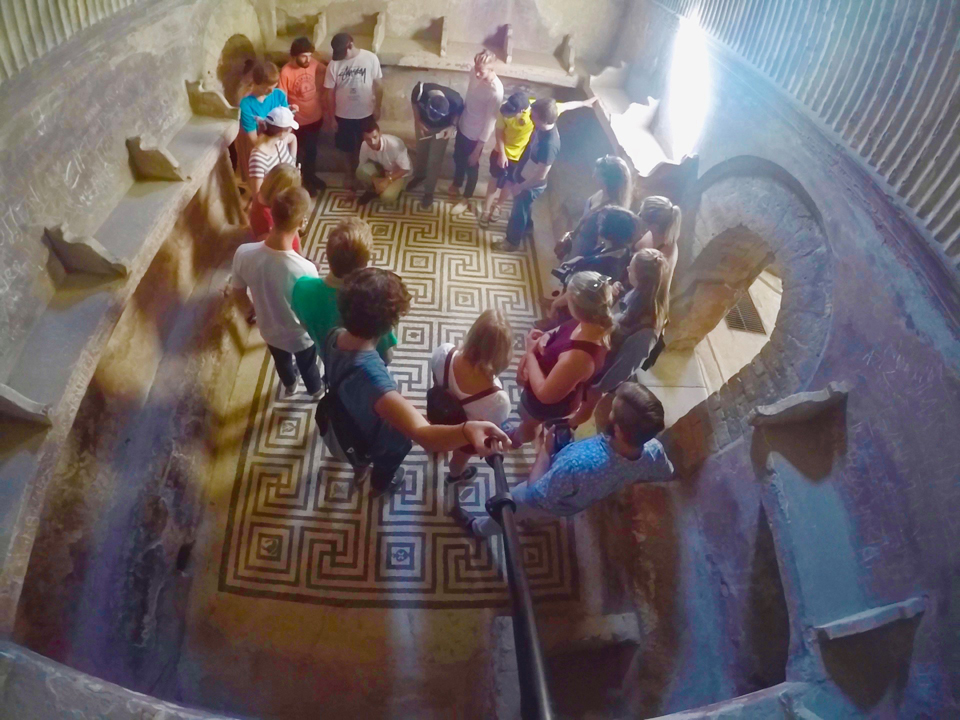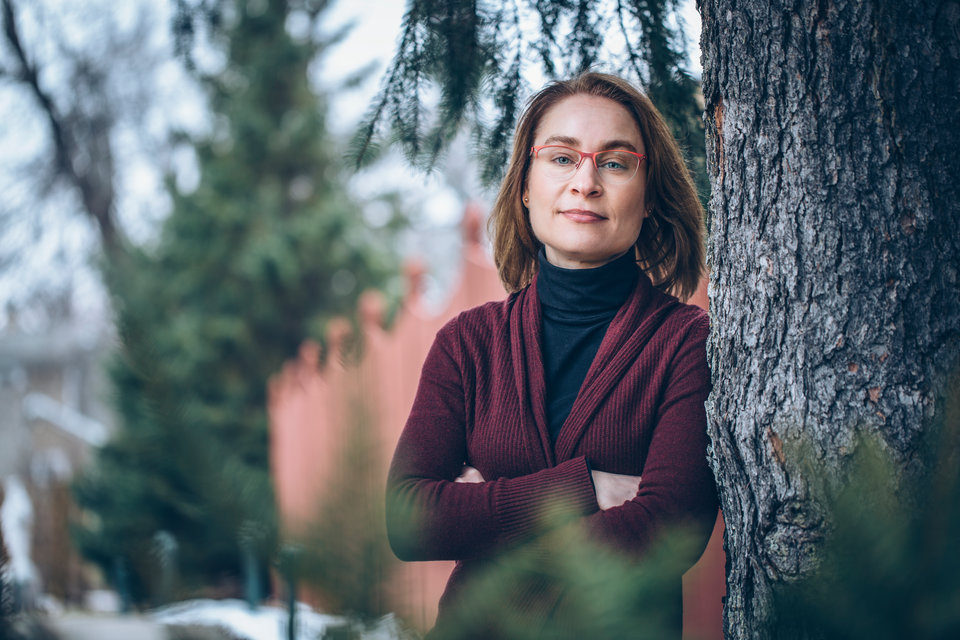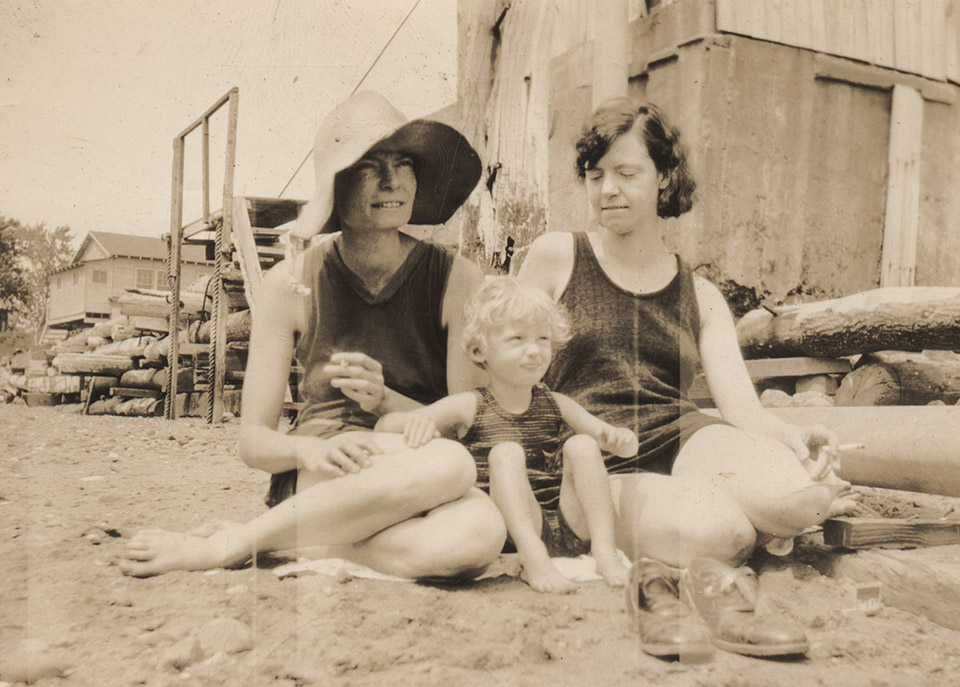For many, the term “pilgrim” evokes thoughts of the Mayflower, the first Thanksgiving and men with buckles on their hats. Pilgrims, however, are not just a thing of the past. They are alive and well and walking (cycling, riding horses) among us, albeit generally without such unique headwear. Modern-day pilgrims, like those early settlers of New England, are people who travel, often to a foreign land, for religious or cultural purposes. This spring, the University of St. Thomas welcomes an art exhibit that portrays the experiences of various North Americans along one of the most important and traversed pilgrimage routes in the world – Spain’s Camino de Santiago.
The Camino de Santiago (Way of St. James) is a series of pilgrimage routes that begin in different places and follow unique itineraries, though all have as their destination Santiago de Compostela, a city located in the Galicia region in northwest Spain. It is here, in the cathedral, that the remains of St. James, the first martyred apostle, are believed to rest. Nearly a quarter million travelers make the pilgrimage along this UNESCO World Heritage Site annually.
An exhibit titled “Sacred Steps on the Camino“ – April 14-May 29 at St. Thomas – depicts travelers’ experiences specifically along the Camino francés, or French Way, the route which is both most historically significant (with clear documentation dating from the 12th century) and most followed today. Traditionally beginning in France, this route enters Spain through the Pyrenees, passes through Pamplona (where there’s no need to run from bulls), crosses the winemaking region of La Rioja, continues to the cities of Burgos and León with their renowned Gothic cathedrals and traverses the fruited Valley of the Bierzo before finally stretching on to Santiago. Though travelers may join the route at any point along its approximately 500 miles, those who cover the final 62 miles on foot or the final 124 miles on bike or horseback receive an official compostela certificate.
The 39 pieces of art that make up the exhibit depict much of the physical reality of the regions of Spain through which the Camino moves. Inevitably, though, the works also reveal something of the history of these lands and of the culture of their inhabitants as experienced by eight pilgrim artists. Herein lies one of the principal motivators for bringing the exhibit, administered by the Spanish Embassy in Washington, D.C., to the St. Thomas campus.
One of the core curricular areas in which all St. Thomas students demonstrate knowledge is language and culture, and the majority do so in the Spanish language and its related cultures. Many students, including hundreds of majors and minors, then do advanced study in Spanish civilization, culture, language and literature. This exhibit helps to illustrate concepts touched upon in this coursework and, at the same time, inspires students to explore other lands, languages and cultures. Many may feel drawn to Spain, where some 70 St. Thomas students study each year, both through programs in Seville and Málaga directed by UST’s Modern and Classical Languages Department and through affiliated programs; still others may choose one of the myriad options offered throughout the world through the university’s International Education Center.
Pilgrimage, of course, is not merely a physical journey. As the exhibit’s photos and paintings reveal, it is also an intensely spiritual experience. The installation also resonates with the university’s emphasis on faith and the Catholic tradition, another core area of all students’ coursework and a field commonly researched by St. Thomas faculty. For example, Dr. Jane Tar, associate professor of Spanish, recently spent part of her sabbatical studying and writing about the Convent of Santa Clara, founded along the Camino de Santiago in the 13th century, and about its visionary abbess, Luisa de la Ascención.
Though traditionally a Catholic pilgrimage route and maintained by thousands of Catholic laity and clergy, the Camino nevertheless offers “reassurance and transformation” to those of all faiths, says Dr. George Greenia, the exhibit’s curator and frequent traveler along the Camino (he has logged some 1,500 miles on foot and another 2,000 by bike). Greenia, professor of Hispanic studies at the College of William and Mary in Williamsburg, Va., will give a talk, “Camino de Santiago: Pilgrimage, Medieval and Modern,“ on April 17 at St. Thomas. (See calendar on Page 23.) A reception to open the exhibit follows, featuring Spanish food, music, and a chance to view the artwork and speak with Greenia. All events are free and open to the public, thanks to generous support from the Xacobeo Foundation, the Xunta de Galicia, the Program for Cultural Cooperation between Spain’s Ministry of Culture and U.S. Universities, and St. Thomas’ College of Arts and Sciences and departments of Modern and Classical Languages and Art History.
For more information on the exhibit and the Camino de Santiago, please visit www.sacredstepsinspain.com and www.xacobeo.es.
Read more from CAS Spotlight
